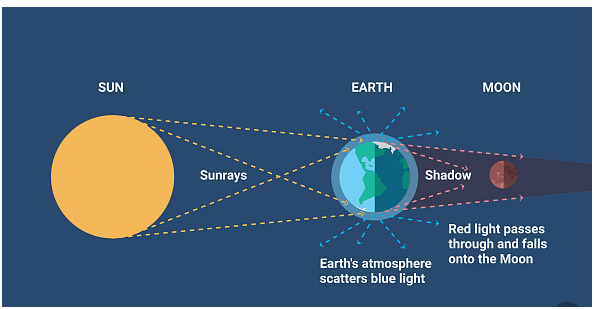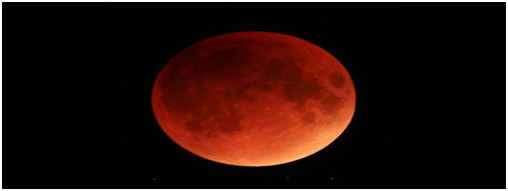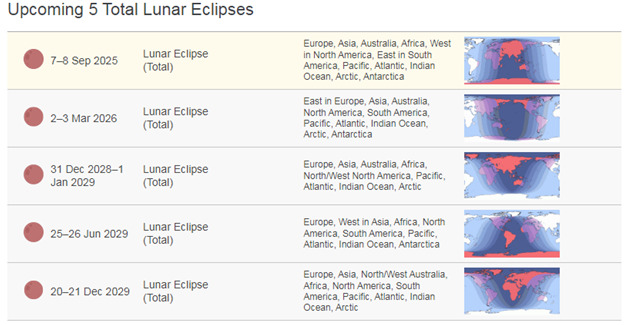September 8, 2025
Blood Moon Explained: 5 Stunning Facts About Lunar Eclipses
What is a Blood Moon?
Celestial enthusiasts across the world witnessed a stunning event on September 7 evening — a total lunar eclipse, also known as ‘Chandra Grahan’. The year’s second lunar eclipse also resulted in a striking ‘Blood Moon’.
When the Moon is entirely in Earth’s shadow, it often appears red and is popularly known as a ‘Blood Moon.’ This phrase is also applied to certain other celestial events.

Three Definitions:
While not a formal scientific term, the phrase ‘Blood Moon’ is often used to describe three distinct celestial events.
- A total lunar eclipse
- A lunar tetrad
- The Full Moon in October
Why Are Blood Moons Red?
- Total lunar eclipse occurs because the Moon goes down the umbra of the Earth, where all direct sunlight would not shine on its surface. Nonetheless, a bit of red light is reflected to the lunar surface indirectly, through the atmosphere of Earth, and so makes the Moon glow in a reddish, yellow, or orange light.
- Rayleigh scattering filters out species within the spectrum of colors as the Sun rays diffract through the atmosphere, leaving only those close to the violet end of the spectrum in the light obstructing the sky as light. The same process is what leads to colorful sunrises and setups. This effect is least effective in red wavelengths (that is why the light that reaches the Moon surface has a reddish tint) and the exhibited eclipsed Moon has a red shade.
- Different sections of the light spectrum are blocked by the atmosphere, based on the atmosphere composition, and hence the Moon could as well appear yellow, orange or brown on a total lunar eclipse.
About Total Lunar Eclipse :
- A total lunar eclipse occurs when the Earth comes directly between the Sun and the Moon, and Earth’s shadow completely covers the Moon.
- This occurs exclusively during a full moon, when the Sun, Earth, and Moon align in a straight line, a phenomenon called syzygy.
What are Lunar Tetrads?
- The term ‘Blood Moon’ is sometimes used for a lunar tetrad, a sequence of four total lunar eclipses that take place over roughly two years, with each occurring about six months apart and separated by five full moons. Because only around one-third of lunar eclipses are total, such tetrads are uncommon.
- The 2014–2015 tetrad gained attention when some religious groups linked it to biblical prophecy, citing a verse in the Book of Joel about the Sun darkening and the Moon turning red as signs of the end times.
How Often Do Lunar Tetrads Happen?
- Italian astronomer Giovanni Schiaparelli noted that the occurrence of lunar tetrads changes across centuries. While certain periods witness multiple tetrads, others have none. For instance, from 1582 to 1908 no tetrads appeared, but in the following 250 years (1909–2156), as many as 17 are expected.
- The current century—2001 to 2100—will have eight tetrads. The 21st century’s first tetrad occurred in 2003–2004, followed by another in 2014–2015, while the upcoming one is expected in 2032–2033, featuring these eclipses:
- April 25/26, 2032
- October 18/19, 2032
- April 14/15, 2033
- October 8, 2033
All eclipses 1900 – 2199:
Hunter’s Moon:
- The term Blood Moon also carries a third meaning, separate from lunar eclipses. In some North American traditions, it refers specifically to the full moon that occurs in October.
- October’s full moon is often called the Hunter’s Moon or Harvest Moon, as this period traditionally marked the season for hunting and storing meat in preparation for winter.
October 6, 2025
September 24, 2025
September 23, 2025
September 22, 2025


